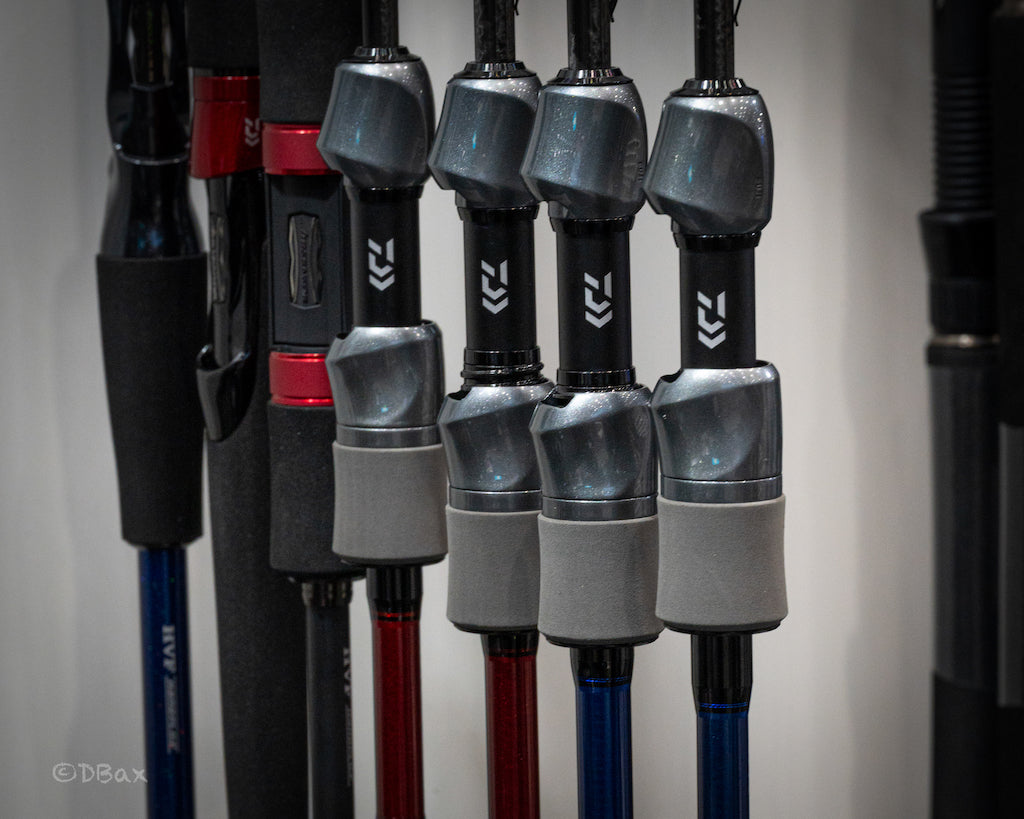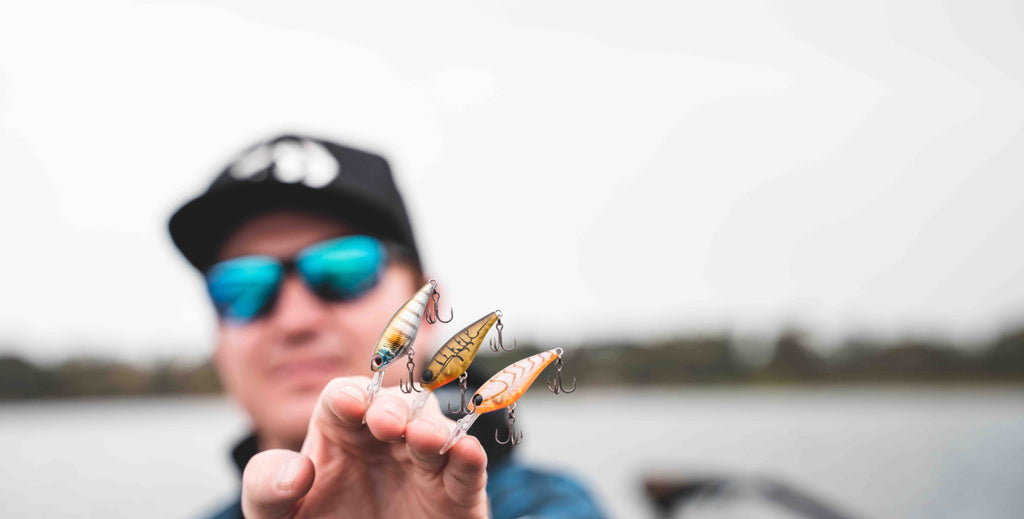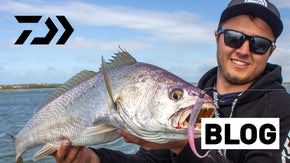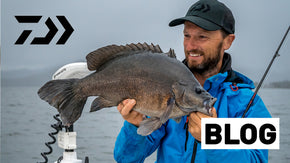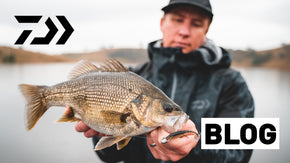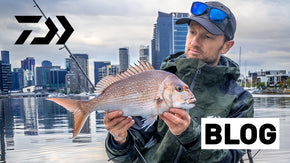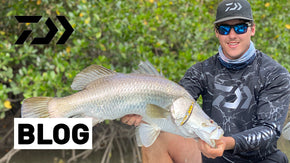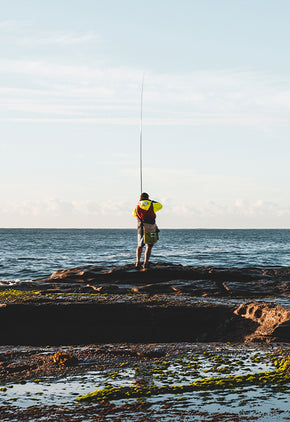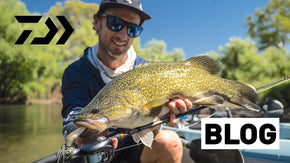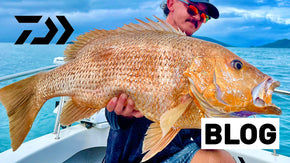Posted 29th September 2023
How to Jerkbait for Barramundi
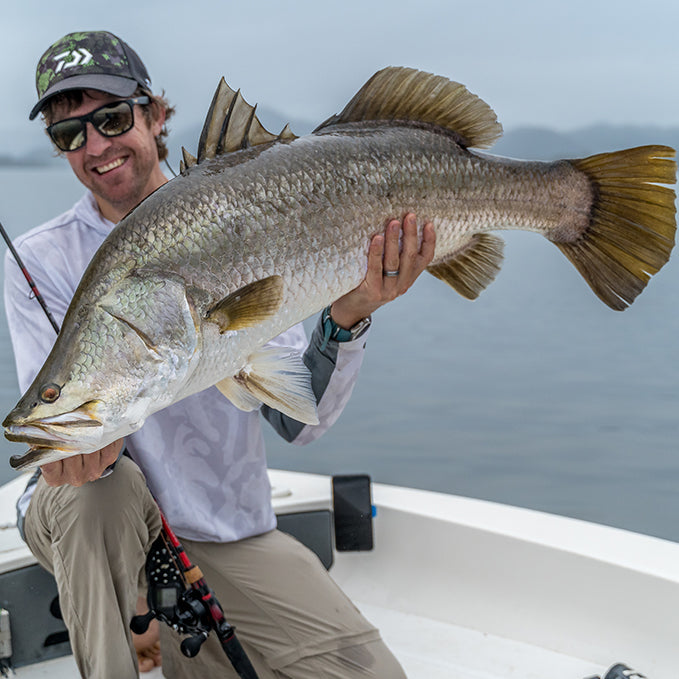
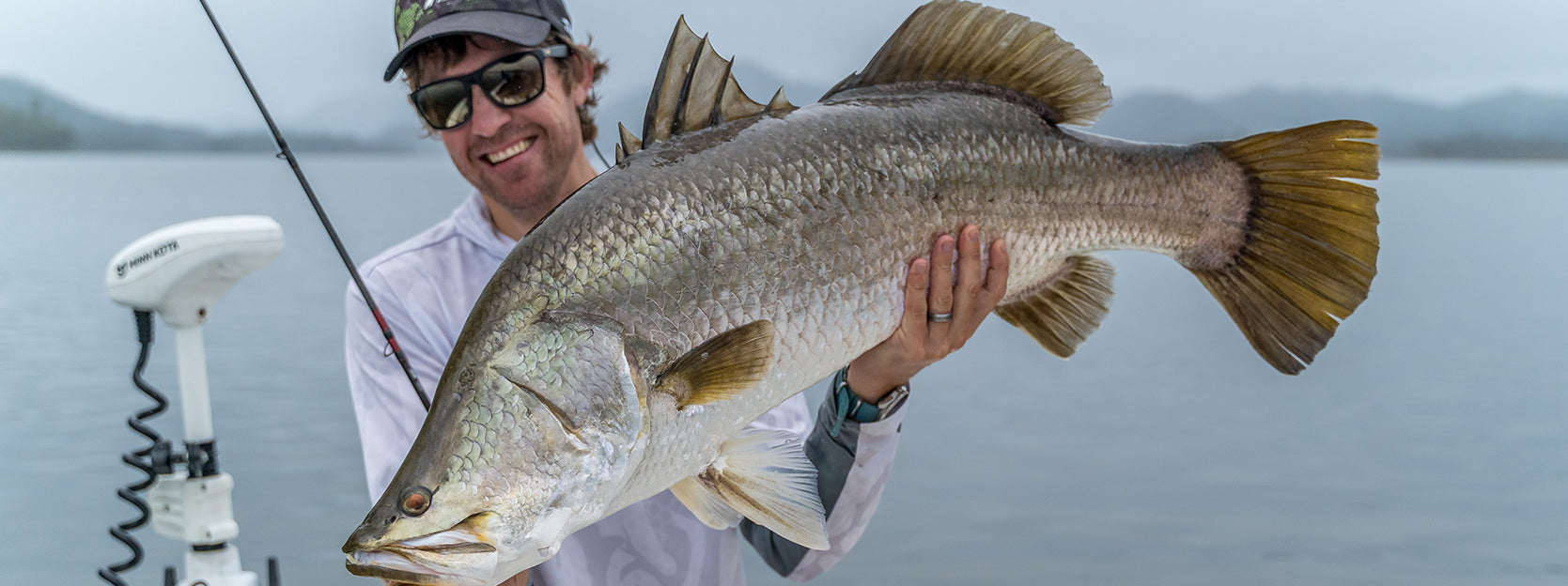
By Nic Moore
Barramundi are one of the most sought-after game fish in Australia, prized for its hard-fighting nature and the challenges they offer. They are found in a variety of habitats, including estuaries, rivers, coastal waters and various stocked impoundments. One of the most effective ways to catch barramundi is by using jerkbaits. In this article, we will discuss the technique of jerkbaiting for barramundi, the gear needed, and some tips for success.

What is Jerkbaiting?
Jerkbaiting is a fishing technique that involves using a lure that imitates a wounded baitfish. The lure is cast out and then retrieved in a series of short, sharp jerks, causing the lure to dart erratically through the water. This erratic action is intended to trigger the predatory instincts of the fish and provoke a strike.
Jerkbaits come in a variety of shapes and sizes, but they all have one thing in common: they are designed to be fished with an erratic, jerky retrieve. Some jerkbaits are designed to float on the surface, while others sink slowly through the water column. The most effective however are perfectly tuned suspending jerkbaits. Tuning jerkbaits predominately involves adjusting the weight of terminals on the lure for the salinity and temperature of the water you typically fish but you can also adjust weight to suite your leader material and thickness.
Why Jerkbaiting Works for Barramundi
Barramundi are opportunistic predators that feed on a variety of prey, including baitfish, prawns, and crustaceans. They are also ambush predators, lying in wait for their prey to come within striking distance. they are very effective feeders and often hunt in small packs of 3-4 fish. Jerkbaiting is an effective technique for barramundi because it mimics the erratic, wounded movements of a baitfish, making it an irresistible target for hungry barramundi.

Jerkbaiting Techniques for Barramundi
Jerkbaiting for barramundi can be done from a boat or from the shore. The technique involves casting the lure out and then retrieving it with a series of short, sharp jerks. The jerks should be quick and methodical, causing the lure to dart and dive through the water. Often, they prefer the most subtle of movements. The pauses between the jerks are just as important as the jerks themselves, as they give the lure a chance to sink/rise or hang perfectly suspended in their face imitating the movements of a wounded baitfish.
When fishing from a boat, it is important to position the boat in areas where barramundi are likely to be found but also change cast angles by repositioning the boat if a strike is not induced. It is important to choose a jerkbait that gets the right depth. You want to be working jerkbaits 1-2ft above the fish. So, it’s good to have a variety of jerkbaits that cover varying depths.
When fishing from the shore, look for areas where barramundi are likely to be feeding, such as creek mouths, headlands, or shallow flats. For shore-based angling you want to focus on shallower running jerkbaits.

Technology
Technology has revolutionized the way we work, play and fish, and jerkbaiting for barramundi is no exception. There are a variety of technological tools available that can help anglers locate and catch more barramundi. The biggest revolution in targeting barramundi has come from forward facing sonar or live sonar technologies. In November 2021 before the Australian Barra tournaments at Teemburra Dam. Steve Morgan and I did a film series for the Double Clutch 115SP and Steez Current Master 93SP.
We had a good start to our day at Teemburra getting multiple fish and it was the first time I had used live sonar for barra targeting the traditional barra points and edges. Around midday I said Steve that we should go check some suspended fish to see how we could use the technology.
Five minutes into fishing this new area Steve scanned out behind us exclaimed that the fish were all sitting out in the opens in 40ft plus of water. He lined up a cast and watched the eat. From that point both of us were fully addicted and he went on to do extremely well targeting those suspended fish in the 2021 and 2022 ABT BARRA events. I went home straight that evening and installed my Active Ttarget which had been in the box for over a week. It is very evident how this technology has changed jerkbaiting and catching Barra. There are plenty of tips and tricks using live sonar for barra which we may cover in future articles.
Another useful technology is GPS Mapping. GPS mapping apps and devices can help you locate productive fishing spots, mark waypoints, and navigate to your desired location. Many apps also provide detailed maps of underwater structures, which can be helpful in finding potential barramundi hotspots. Mapping data has become a lot more accessible to the public through apps like Google Earth and Queensland globe. It is especially useful in help your accessibility into land-based spots and shallow creeks.

Gear for Jerkbaiting Barramundi
To effectively jerkbait for barramundi, you will need a few key pieces of gear:
1. Rod: A fast-action baitcasting rod with a sensitive tip is ideal for jerkbaiting. The rod should have enough backbone to handle the hard-fighting barramundi, but still be sensitive enough to detect subtle strikes and subtly tweak the lure. An awesome jerkbait rod is the Daiwa Battler Black Jack. This is the pinnacle of jerkbaiting rods.
2. Reel: A baitcasting reel with a high gear ratio is ideal for jerkbaiting. The high gear ratio allows for a fast retrieve, which is essential for the aggressive fight after the hookup. Any of the Daiwa 150-200 size baitcasters are ideal. My favourite reel is the Daiwa Morethan TW PE.
3. Line: A braided line with a 30lb breaking strain is ideal for jerkbaiting barramundi. The braided line has a low stretch, which allows for a better feel of the lure and a more direct hookset. I typically run J-Braid Grand 30lb. It is unbelievable when fishing in the trees in the impoundments.
4. Leader: A fluorocarbon leader with a breaking strain of at least 60lb is also great. My preference is the new Saltiga X-Link 60lb
5. Jerkbaits: a variety of different sizes and different colours that dive to varying depths is essential. In the Daiwa range look at the Double Clutch 115SP or Steez Current Master 93SP.


 Contact Us
Contact Us Blog
Blog About
About
